






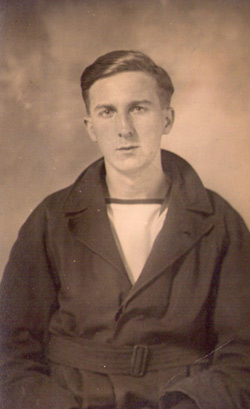 |
Eric
Pountney was born at Harborne, near
Birmingham, on 6 August 1918 and lived there all his life apart from his wartime service in the Royal Navy. He was the youngest of five children and his father abandoned the family shortly before he was born. When he
volunteered for the Royal Navy on the 28 September 1938 during the
Munich crisis "for the period of hostilities" he gave his trade as apprentice salesman (showroom assistant) and his next of kin as his mother, Dora Mary Pountney. Photographed at Londonderry in 1941 (left) and at HMS St George, Douglas, Isle of Man, in 1944.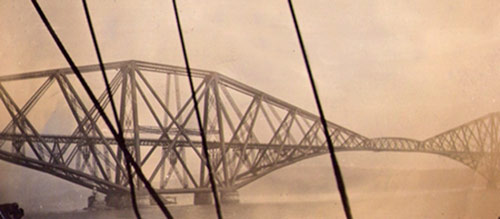 |
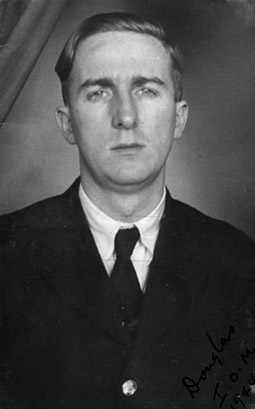 |
 |
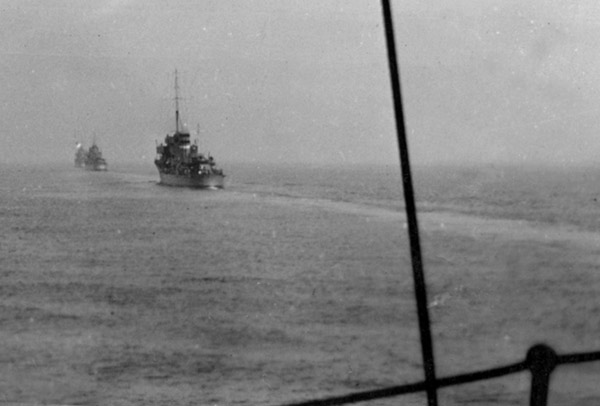 |
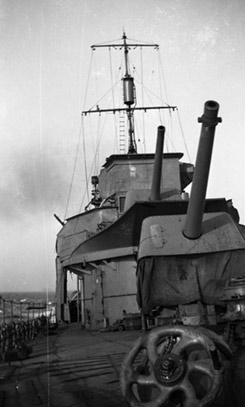 |
Sea trials over HMS Venomous proceeded down the east coast to Weymouth Bay where King George VI inspected the 133 ships of the Reserve Fleet Fleet
under Vice Admiral Sir Max Horton and Lt Cdr McIntyre RN was presented
to the King. Sadly, we have no photographs of the Review, the first
since the one held at Southend in 1919 to celebrate the end of the
Great War.
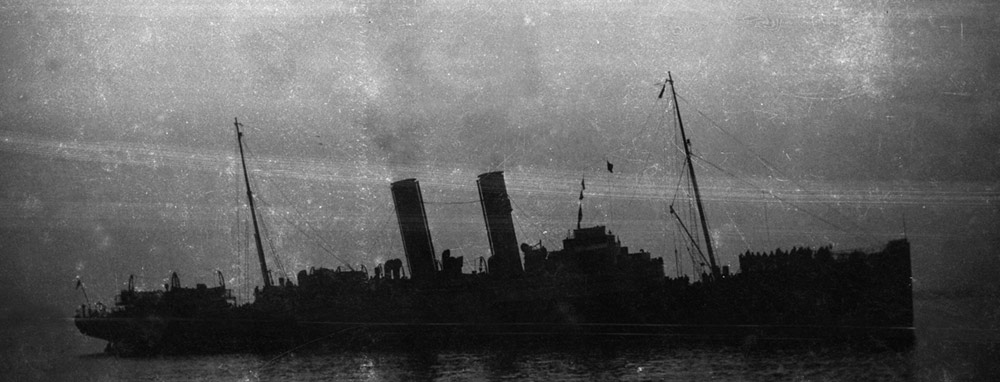
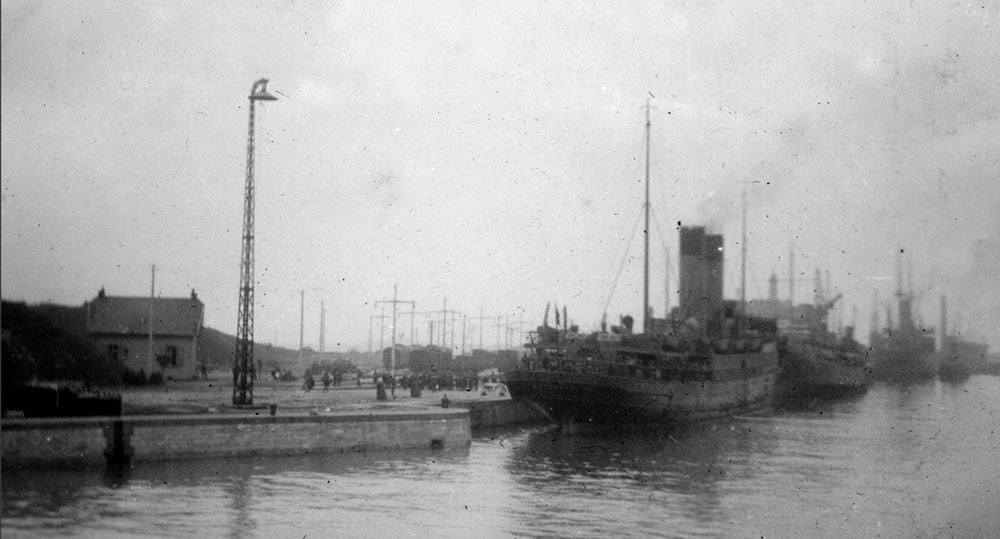
When war was declared on the 3 September Venomous was anchored off Portsmouth. The next few weeks were dull with Venomous
escorting troop ships carrying the British Expeditionary Force (BEF) to
France. The ships left in convoy at night for Cherbourgh, Le Havre and, occasionally, Brest and returned the next day.
Eric Pountney's photograph of the LNER ferry SS Archangel with troops crowding its fo'scle must have been taken at this time. It was launched as the SS St Petersburg when built in 1910 as a ferry on the Great Eastern Railway Co's Harwich to Hook of Holland route but renamed Archangel in November 1915. It was requisitioned as a troop carrier in World War I and again in 1939. Between
the 11 December 1940 and the 21 May 1940 under Captain A.W. Greenham it
made twenty trooping trips from Southampton to Cherbourg, one to Brest
and twelve to Le Havre. it was used to evacuate the troops of the BEF
from Cherbourg and St Valery before being laid up at Gairloch from July
1940 to March 1941. It was bombed on the 16 May 1941 while carrying
troops from Kirkwall to Aberdeen with great loss of life and broke up
after beaching north of Aberdeen.
McIntyre left shortly before Christmas and was succeeded as CO by Lt Cdr John McBeath RN. Eric Pountney had the time to use a tripod to photograph himself in the Wireless Office and his shipmates in their Mess on the lower deck where they ate, rested and slept in hammocks slung above the mess tables.
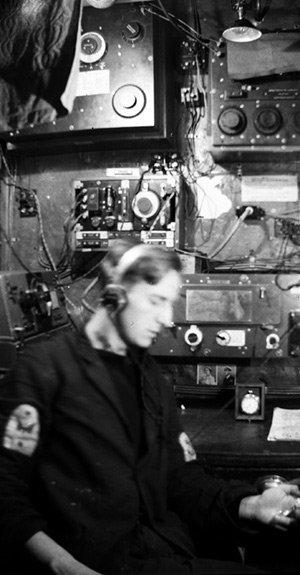
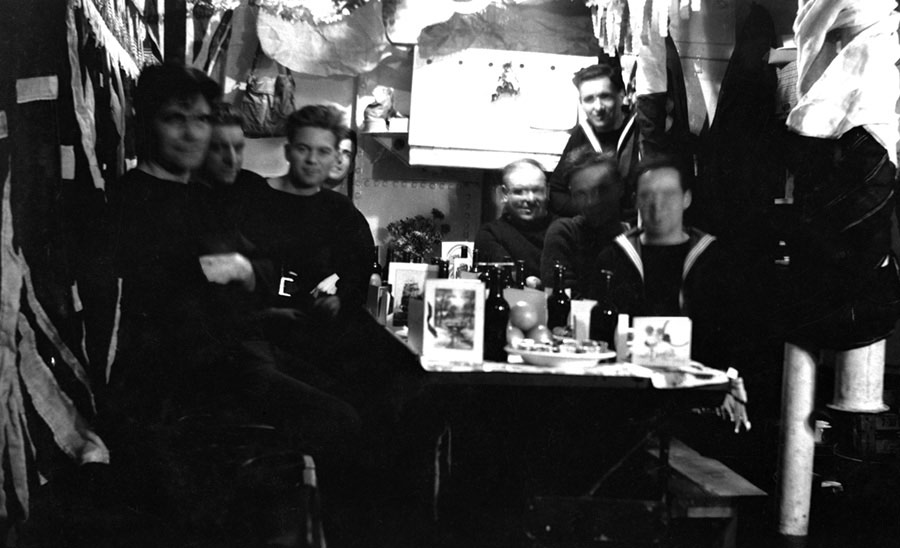
Left: Leading Telegraphist (note arm badges) Eric Pountney on duty in the W/T Office on HMS Venomous
Right: the Mess Deck where telegraphists and coders spent their leisure time between watches relaxing, eating and sleeping
The cards, sweets, fruit and bottles of beer suggest they are celebrating a birthday - or Christmas?
Courtesy of Erica Pountney and Angela Bowley, the daughters of Eric Pountney, the photographer

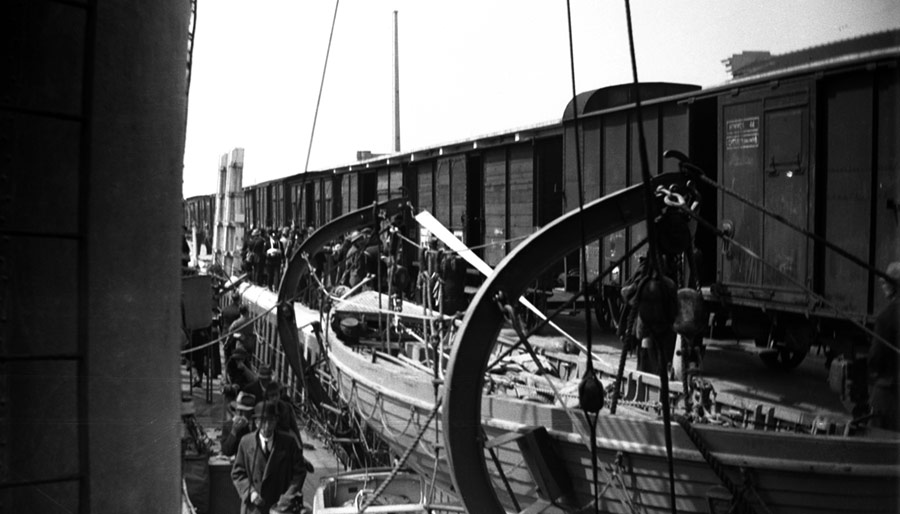
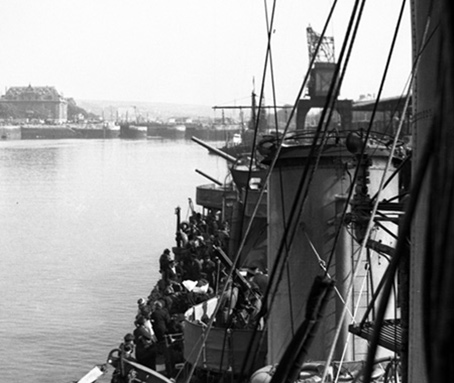
Left: Refugees being assisted aboard HMS Venomous at Calais on the 21 May 1940
Right: HMS Venomous leaving Boulogne the following day with the Pont Maigret, the swing bridge, visible in the background
Courtesy of Erica and Angie, the daughters of Eric Pountney, the photographer
HMS Venomous was sent to Calais on the 21 May to bring back employees and vital equipment from the Courtaulds factory
but also embarked refugees (left above). The following day McBeath was
ordered to take the Welsh and Irish Guards to reinforce the defence of
Boulogne and returned with 26 orphan children, four French sisters and two young French teachers as
well as many other refugees desperate to escape the besieged harbour
city. The white head dresses of the French nuns can be glimpsed in the
photograph on the right.

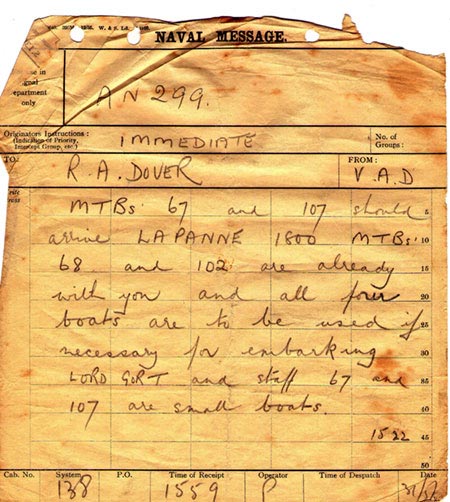 The
Royal Navy had been using Wireless Telegraphy aboard its ships
since before the Great War. Morse code provided
secure long range communication from shore to ship. Wireless Telegraphy
Operators in the W/T Office sat in front of a receiver and wore
headphones. Radio silence restricted its use for communication between ships.
The
Royal Navy had been using Wireless Telegraphy aboard its ships
since before the Great War. Morse code provided
secure long range communication from shore to ship. Wireless Telegraphy
Operators in the W/T Office sat in front of a receiver and wore
headphones. Radio silence restricted its use for communication between ships.
Visual signalling with flags had been used for communication between ships
since Nelson's day. Signals could now be sent in morse with high intensity signalling lamps, which could be 'read' in daylight.
Visual Signalmen were known as "bunting tossers" and
Wireless Telegraphy Operators as "sparkers".
Keith Burns, a "spark" on HMS Undaunted in 1943, describes the training of telegraphists and the use of wireless telegraphy aboard destroyers
in wartime vividly illustrated by the signals Eric
Pountney received (and sent) during the evacuation
of the Welsh and Irish Guards from Boulogne on the 23 May and the
evacuation of troops from Dunkirk on the 31 May 1940.
With the troops safely home from Boulogne and Dunkirk the priority now was defending Britain against invasion. HMS Venomous joined the 18th Destroyer Flotilla at Harwich on night time patrols off the east coast occasionally varied by escorting east coast convoys. This routine offered time for trips ashore.
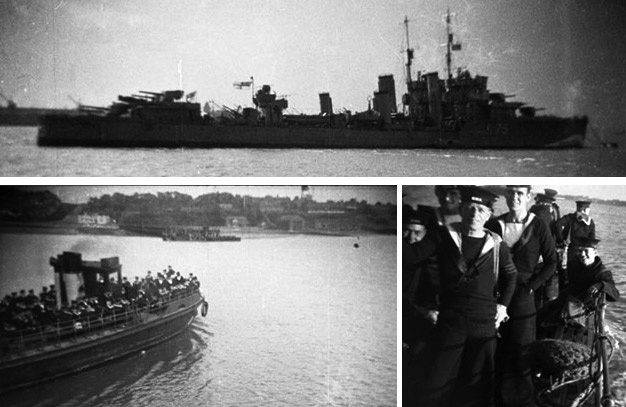

HMS Venomous joined the 18th Destroyer Flotilla in Harwich Roads
HMS Venomous moored alongside a sister ship and the "Liberty boat", Brightlingsea, collecting the "liberty men" from the destroyers.
Landing at Shotley Jetty to catch the bus to Ipswich avoided the customs inspection at Parkeston Quay, Harwich.
Right: On leave at Harborne with his elder sister, Dorothy Hall, the mother of Anitra.
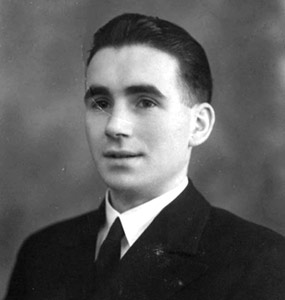 On the 18 December HMS Venomous
was transferred to Western Approaches Command and joined the First
Escort Group at Londonderry, Northern Ireland. She was to escort the
Atlantic convoys assembling at Liverpool and the Clyde to ports in Nova
Scotia on Canada's eastern seabord.
On the 18 December HMS Venomous
was transferred to Western Approaches Command and joined the First
Escort Group at Londonderry, Northern Ireland. She was to escort the
Atlantic convoys assembling at Liverpool and the Clyde to ports in Nova
Scotia on Canada's eastern seabord.
The long running battle between the U-boat fleet and the British and Canadian escorts became known as the Battle of the Atlantic, the longest continuous military campaign in World War II. Next year is the seventieth anniversary of the turning of the tide against the U-Boats in 1943.
HMS Venomous
was based in Londonderry for more than a year and the crew got to know
it well. Eric Pountney acquired a driving licence and one of his fellow
Wireless Telegraphers, PO James Andrew Tonner (on right), met his
future wife in Derry. His widow and their children still live there
today. Eric's elder brother, Sydney Russell Pountney, was serving in
Northen Ireland with the Royal Corps of Signals and also married an
Ulster girl, Eileen.
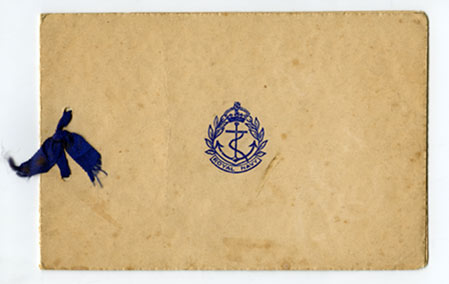
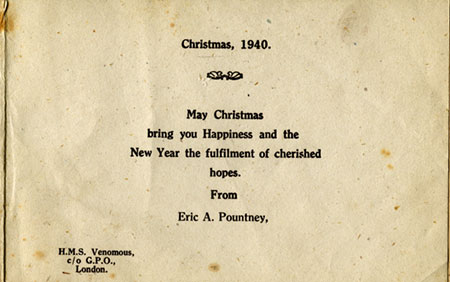
Despite ship names not being given on cap tallies HMS Venomous had its own Christmas card in 1940
Was this a private initiative by Eric Pountney? Or was it common practice aboard Royal Navy ships?
Courtesy of Erica and Angie, the daughters of Eric Pountney

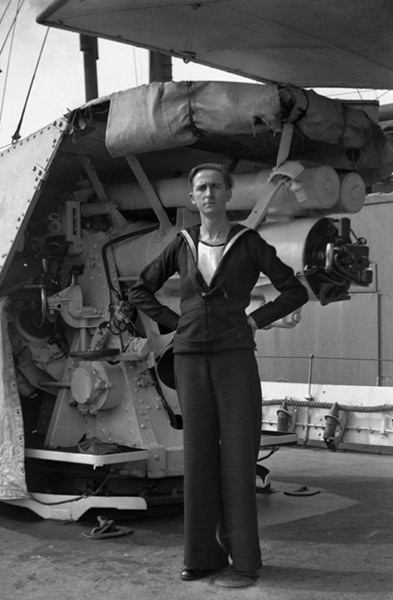
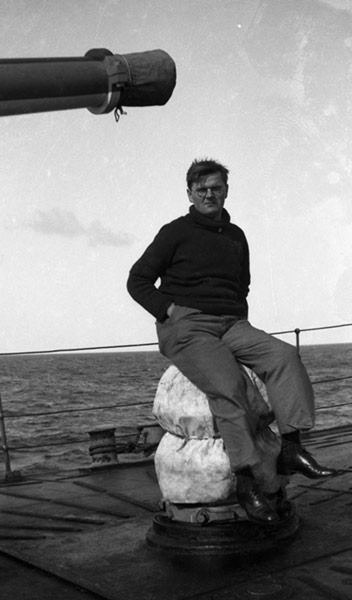

Left: Eric Pountney and "A" Gun Centre: Eric's elder brother, Sydney (centre), was based in Northern Ireland visited him aboard Venomous.
Right: Venomous refuels at sea from HMS Springbank, an Armed Merchant Cruiser (AMC) with CAM Aircraft; with Sydney Pountney (left) leaning against railing
This photograph was taken on the 6 June 1941 four months before HMS Springbank was torpedoed and sank on the 27 September 1941
Courtesy of Erica and Angie, the daughters of Eric Pountney, the photographer
Venomous
had "short legs" and had to leave the convoys at Havelfjord, the Royal
Navy's base in Iceland where the destroyer depot ship, HMS Hecla, was moored. Eric Pountney photographed the convoys and the stark coast of Havelfjord. After refuelingu Venomous occasionaly rejoined the convoy and continued to Halifax in Nova Scotia but more often awaited the next East bound convoy.
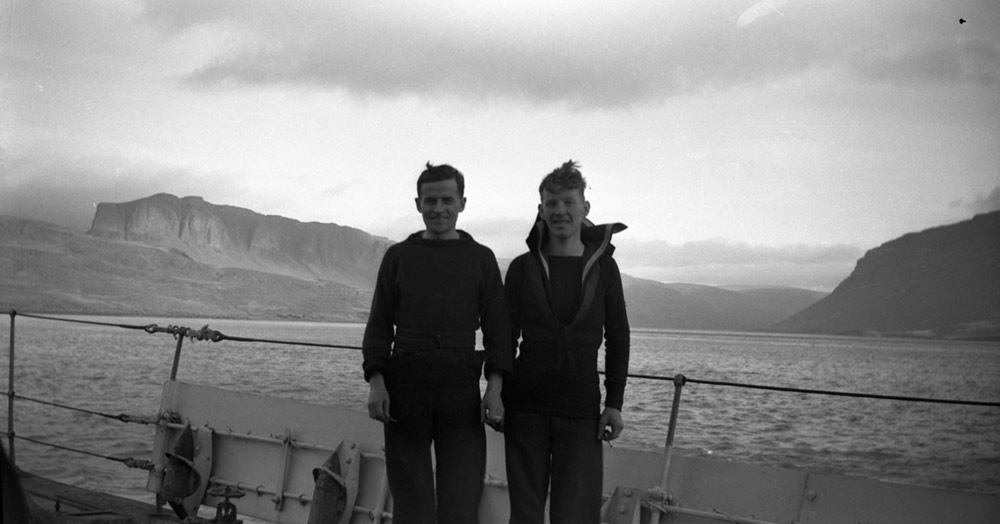
HMS Venomous at Havelfjord in Iceland
The striking cliffs and lowering cloud provide a dramatic backdrop to
this photograph of two unidentified ratings on the deck of HMS Venomous
Note the shells for 4.7 inch Guns stowed against the rails at deck level ready for use
Courtesy of Erica and Angie, the daughters of Eric Pountney, the photographer
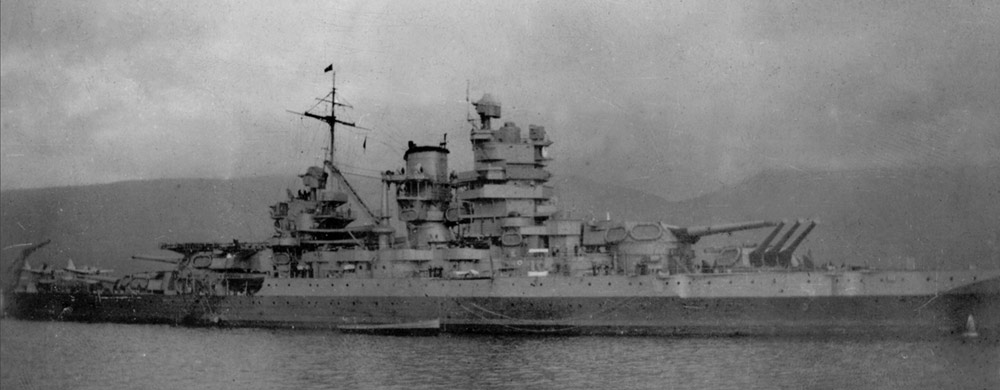
In September 1941 to safeguard against a possible breakout of Tirpitz from its base in Norway the USN sent Task Force 4 to Iceland.
This included the battleships USS Mississippi and USS Wichita, the depot ship USS Vulcan, and a screen of four destroyers.
Photographed by Eric Pountney, Wireless Telegrapher on HMS Venomous
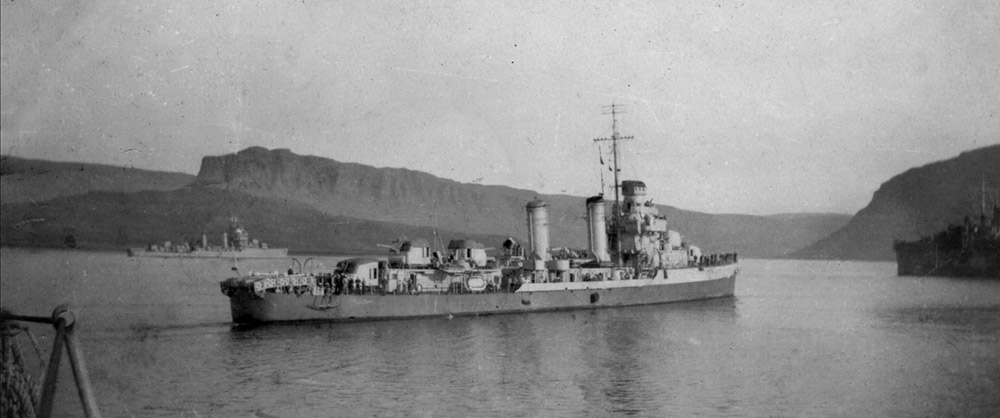
Two USN destroyers of the Benson / Gleaves Class and the destroyer depot ship, USS Vulcan (on right) at Havelfjord, Summer 1941.
Photographed by Eric Pountney, Wireless Telegrapher on HMS Venomous
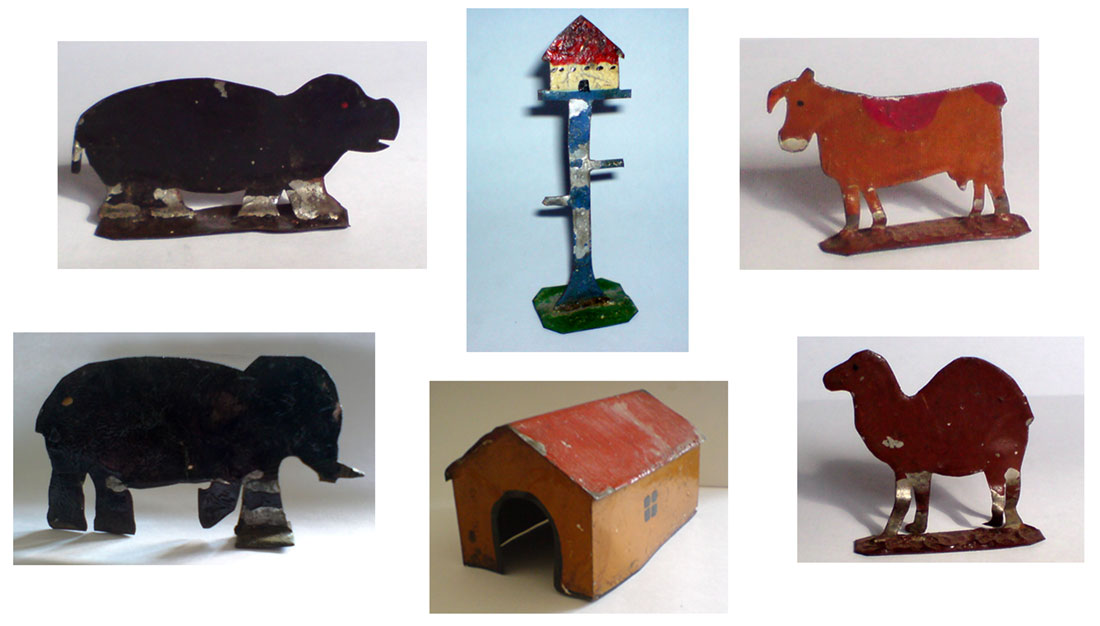
Strict radio silence was essential while escorting Atlantic convoys and the telegraphers had time on their hands
Eric Pountney was single but spent his leisure time making a Hoah's Ark of toy
animals out of Oxo tins, solder and Navy issue paint for his niece, Anitra Hall
Courtesy of Andrew Pountney

Eric Pountney remained aboard HMS Venomous until October 1943 but sadly we have no photographs taken by him after the collision with HMS Keppel on the 11 November 1941. During this time Venomous
escorted Arctic Convoy PQ.15 to Murmansk (his niece ecalled how drawn and haggard he looked on his return), took part in
operations to
relieve the besieged island of Malta and witnessed the sinking of
the aircraft carrier, HMS Eagle. The most dramatic event was the rescue of 500 survivors of HMS Hecla,
the destroyer depot ship at Havelfjord in 1941, which was torpedoed off
the coast of North Africa on the night of the 11 - 12 November 1942.
From
then on she was based at Gibraltar as a Mediterranean escort. HMS Venomous
escorted one of the first through convoys from Gib to Alex as the war
in north Africa turned in favour of allied forces and the invasion
fleet from Alexandria to
Sicily in July 1943. The studio photograph with the pyramids as a
backdrop was taken in Alex where he also bought a brightly coloured
Egyptian doll for his niece, Anitra.
HMS Venomous
had always been prone to boiler problems and mechanical problems forced
her recall to Falmouth in October 1943 where Eric Pountney left the
ship along with most of the ship's company.
******
After leaving HMS Venomous at Falmouth Eric Pountney was posted to HMS St George
on the Isle of Man. A former holiday camp outside Douglas it had been
established as a Signal Training School for boys from HMS Ganges (Shotley Gate), HMS St Vincent (Gosport) and HMS Impregnable
(Plymouth) which were required for training of Hostilities Only (HO)
ratings. Eric Pountney joined the staff as an instructor and remained
there until the 15 June 1944.
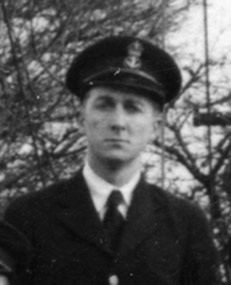
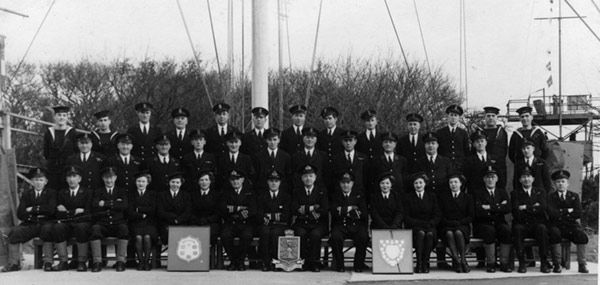
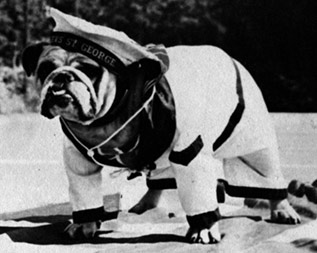
Eric Pountney is third from right rear row in this photograph of the staff of HMS St George on the Isle of Man
Also present - though not yet identified - is the Schoolmaster on HMS Hecla, Greg Clarck
Courtesy of Erica and Angie, the daughters of Eric Pountney
On the 26 June 1944 Eric Pountney was posted to the Leander Class light cruiser, HMS Orion, in time to take part in the allied landings in the South of France and in September Orion was transferred to the British Aegean Force to cover the occupation of the
Aegean Islands and the Greek mainland. Eric Arnold Pountney was released
from the Royal Navy on the 1 January 1946 after more than seven years
service in the Royal Navy during which he had advanced from raw recruit
to PO Telegrapher WT2 (WRX2064).

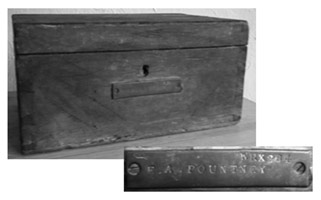 These
seven years were the defining influence on Eric Pountney's life. He
carefully preserved his
photographs and copies of the signals sent and received during critical
moments in 1940 plus his service record. He married his young wife, Irene Annie Foxall, in 1947 and
had the family he always wanted, three daughters (Susan, Angela and Erica) and a son, Andrew, but one
sensed that his subsequent working life never gave him the satisfaction
he had during those seven years of service with the Royal Navy.
Eric and his elder brother Sydney were both enthusiastic radio hams and
Eric worked with Syd in his motorbike shop until Syd died when Eric had
to ask for his old job back as a clerk.
These
seven years were the defining influence on Eric Pountney's life. He
carefully preserved his
photographs and copies of the signals sent and received during critical
moments in 1940 plus his service record. He married his young wife, Irene Annie Foxall, in 1947 and
had the family he always wanted, three daughters (Susan, Angela and Erica) and a son, Andrew, but one
sensed that his subsequent working life never gave him the satisfaction
he had during those seven years of service with the Royal Navy.
Eric and his elder brother Sydney were both enthusiastic radio hams and
Eric worked with Syd in his motorbike shop until Syd died when Eric had
to ask for his old job back as a clerk.
Eric Pountney was only 55 when he died in 1973 and left no letters or a journal to tell his story and I have had to rely on a few random recollections of his surviving daughters, Erica and Angie, and niece, Anitra Hall, to piece together the story of his years on HMS Venomous. His daughter still has his seaman's kitbag with his name on its base within fancy ropework and his seaman's "ditty" box.
The story of HMS Venomous is told by Bob Moore and Captain John Rodgaard USN (Ret) in
A Hard Fought Ship
Buy the new hardback edition online for £35 post free in the UK
Take a look at the Contents Page and List of Illustrations